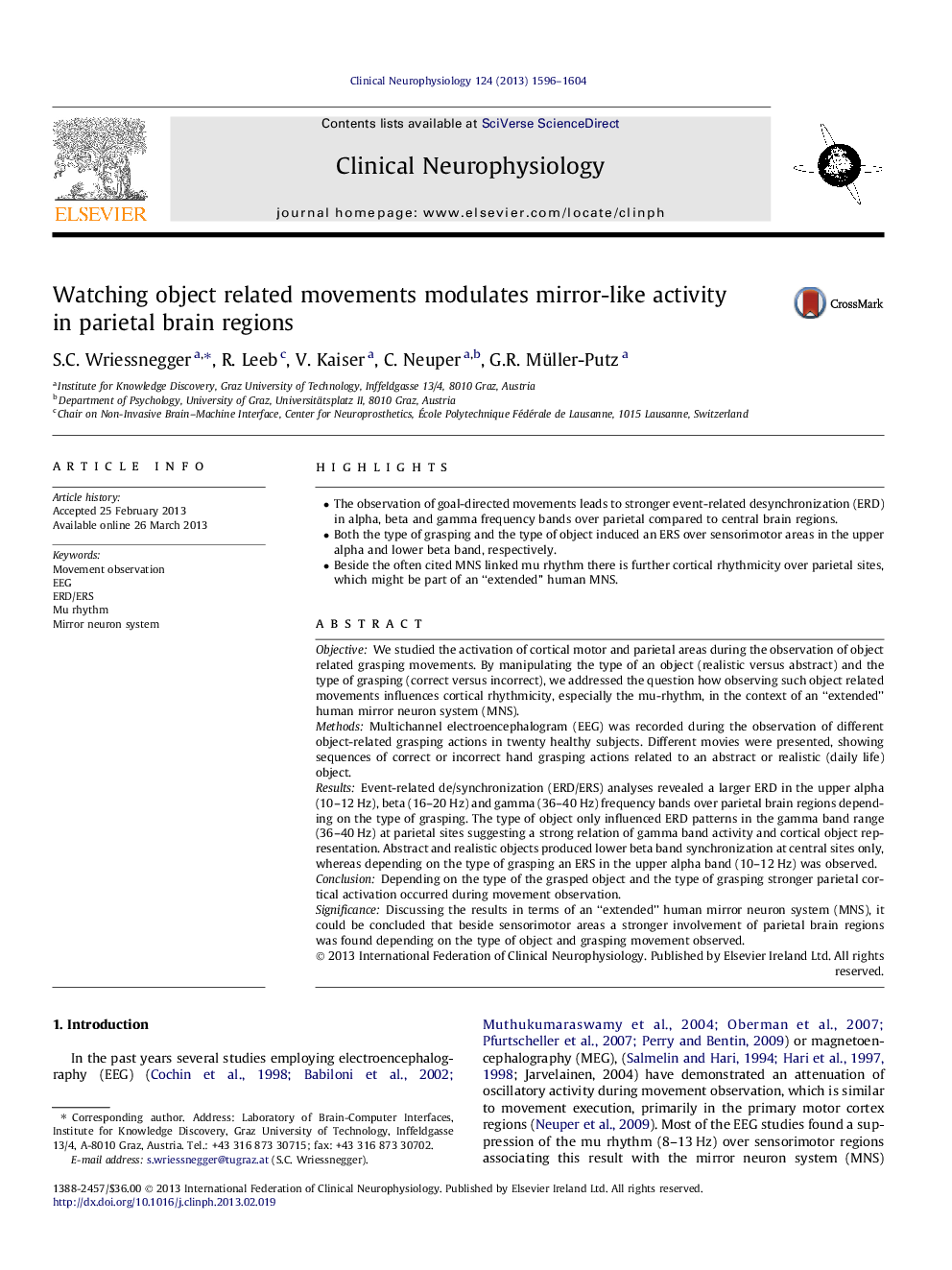| Article ID | Journal | Published Year | Pages | File Type |
|---|---|---|---|---|
| 3045185 | Clinical Neurophysiology | 2013 | 9 Pages |
•The observation of goal-directed movements leads to stronger event-related desynchronization (ERD) in alpha, beta and gamma frequency bands over parietal compared to central brain regions.•Both the type of grasping and the type of object induced an ERS over sensorimotor areas in the upper alpha and lower beta band, respectively.•Beside the often cited MNS linked mu rhythm there is further cortical rhythmicity over parietal sites, which might be part of an “extended” human MNS.
ObjectiveWe studied the activation of cortical motor and parietal areas during the observation of object related grasping movements. By manipulating the type of an object (realistic versus abstract) and the type of grasping (correct versus incorrect), we addressed the question how observing such object related movements influences cortical rhythmicity, especially the mu-rhythm, in the context of an “extended” human mirror neuron system (MNS).MethodsMultichannel electroencephalogram (EEG) was recorded during the observation of different object-related grasping actions in twenty healthy subjects. Different movies were presented, showing sequences of correct or incorrect hand grasping actions related to an abstract or realistic (daily life) object.ResultsEvent-related de/synchronization (ERD/ERS) analyses revealed a larger ERD in the upper alpha (10–12 Hz), beta (16–20 Hz) and gamma (36–40 Hz) frequency bands over parietal brain regions depending on the type of grasping. The type of object only influenced ERD patterns in the gamma band range (36–40 Hz) at parietal sites suggesting a strong relation of gamma band activity and cortical object representation. Abstract and realistic objects produced lower beta band synchronization at central sites only, whereas depending on the type of grasping an ERS in the upper alpha band (10–12 Hz) was observed.ConclusionDepending on the type of the grasped object and the type of grasping stronger parietal cortical activation occurred during movement observation.SignificanceDiscussing the results in terms of an “extended” human mirror neuron system (MNS), it could be concluded that beside sensorimotor areas a stronger involvement of parietal brain regions was found depending on the type of object and grasping movement observed.
